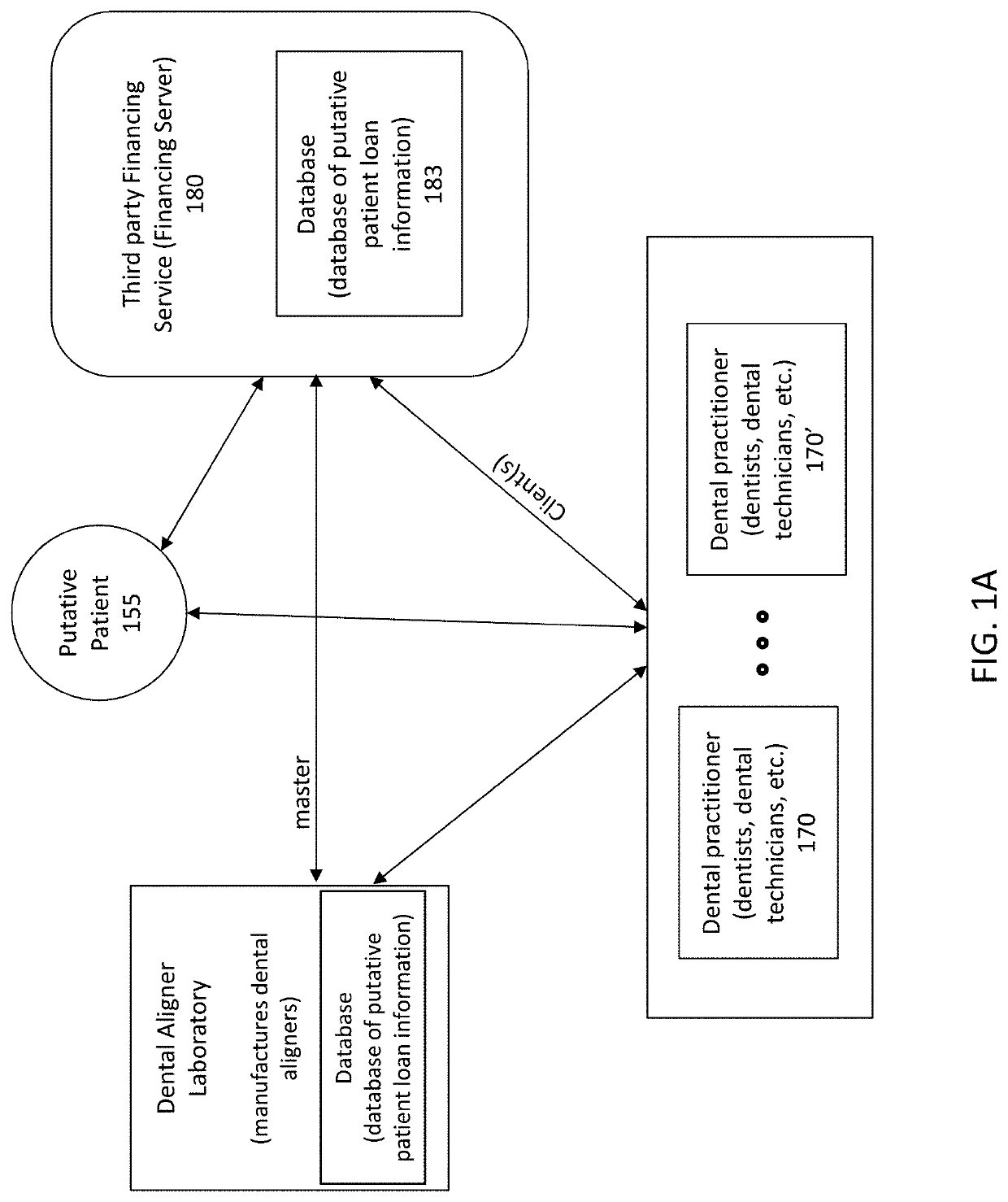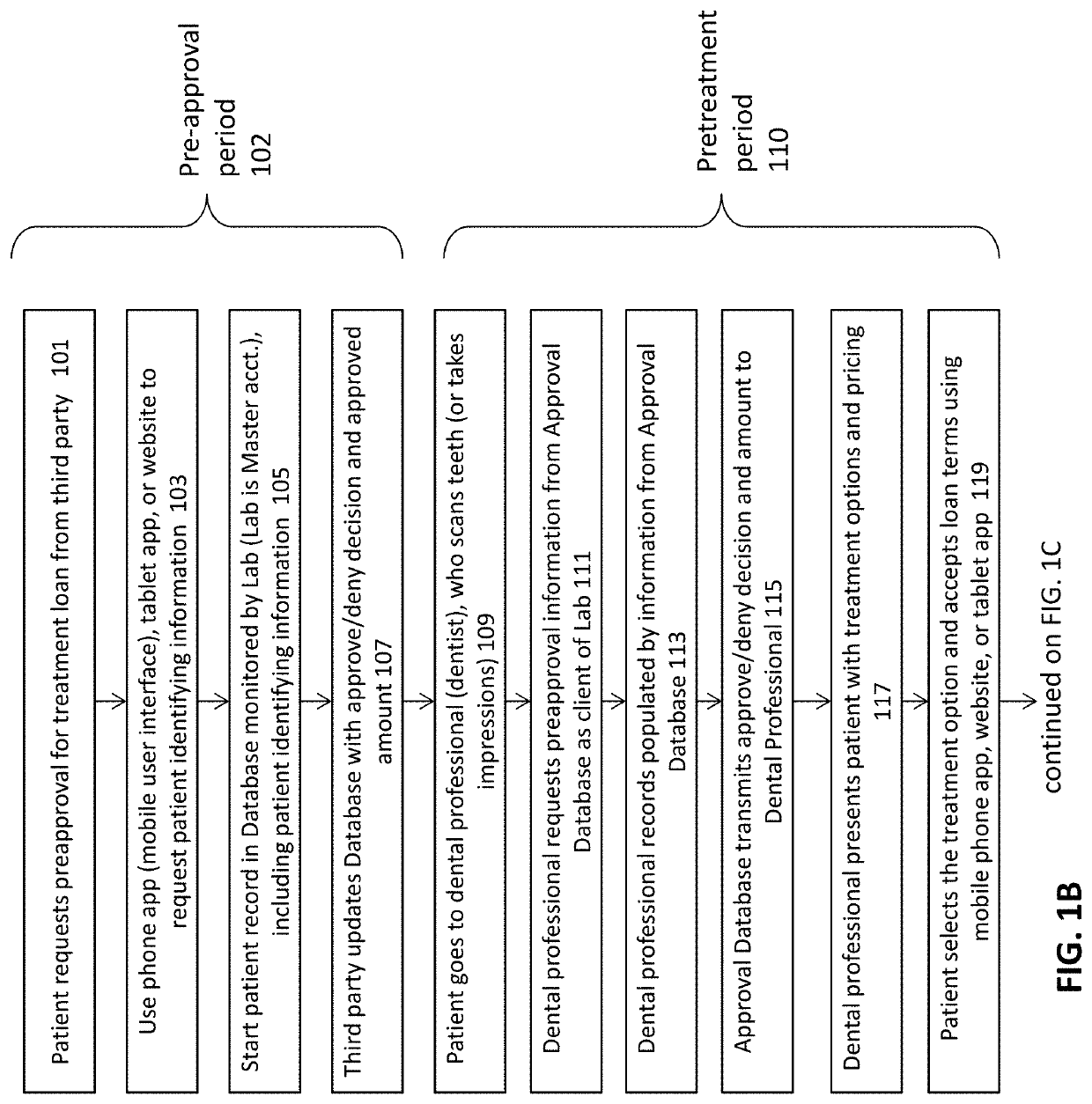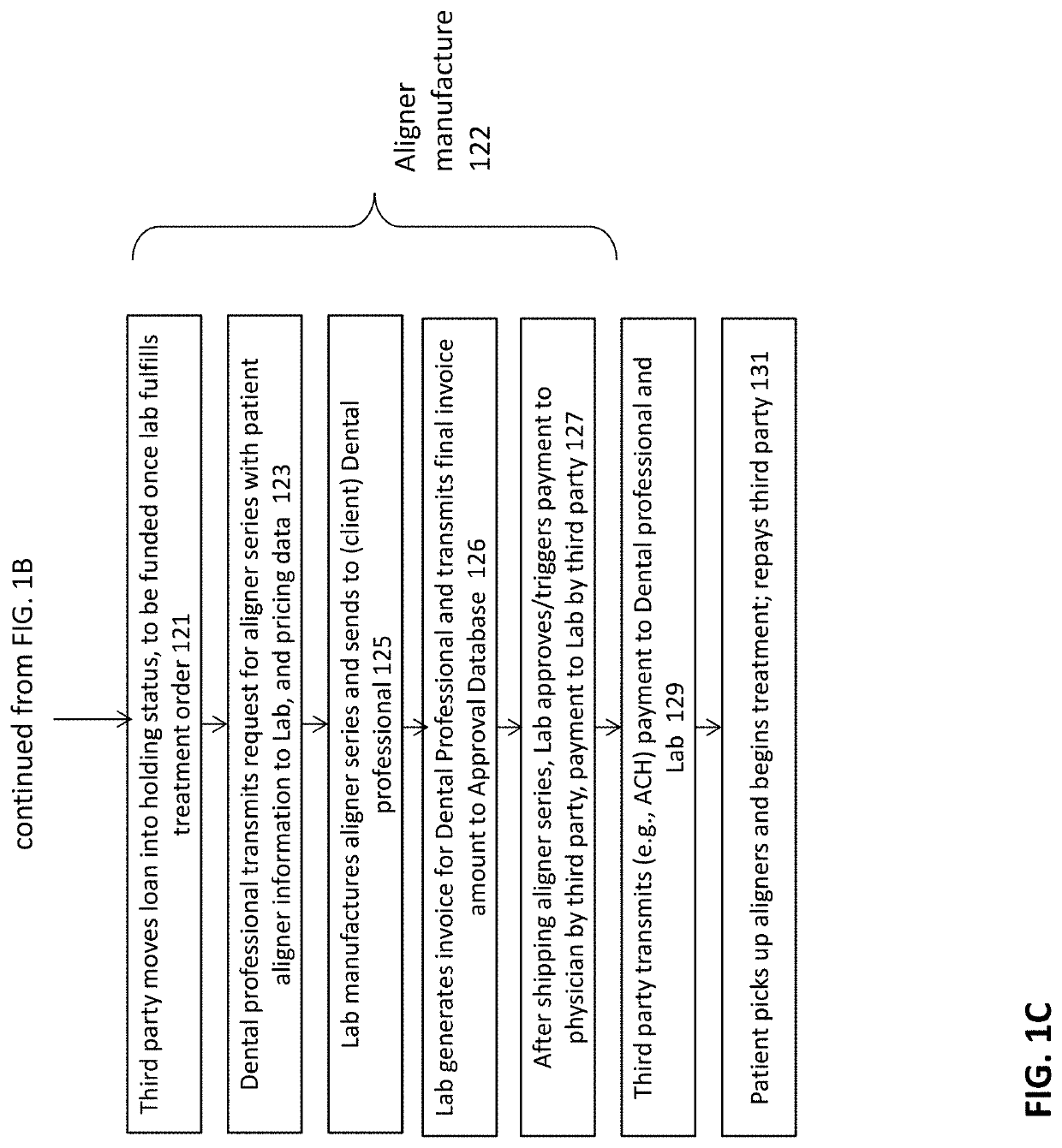Method and apparatuses for interactive ordering of dental aligners
a technology of dental aligners and ordering methods, applied in the field of methods and apparatuses for interactive ordering of dental aligners, can solve the problems of financial disincentives, increased costs for dental practitioners, and cost of orthodontic treatment, and achieve the effect of greater access
- Summary
- Abstract
- Description
- Claims
- Application Information
AI Technical Summary
Benefits of technology
Problems solved by technology
Method used
Image
Examples
Embodiment Construction
[0052]The methods and apparatuses described herein generally allow a dental aligner laboratory (e.g., a dental aligner laboratory associated with a dental aligner manufacturer) 160 to monitor a database of the third party financing service 180, allowing immediate feedback on patient (putative patient 155) status and orders. FIG. 1 gives an overview of possible relationships between the dental aligner laboratory 160, putative patient 155, dental practitioner(s) 170, 170′, and third party financing service 180.
[0053]The dental aligner manufacturer may coordinate the process manufacturing a series of aligners on behalf of a putative patient including the important pre-manufacturing steps of financing and pre-screening of putative patients before a therapy is started. Therapy typically starts when the aligners are provided to the putative patient, e.g., by the dental practitioner. Described herein are methods in which the dental aligner laboratory (rather than the dental practitioner an...
PUM
 Login to View More
Login to View More Abstract
Description
Claims
Application Information
 Login to View More
Login to View More - R&D Engineer
- R&D Manager
- IP Professional
- Industry Leading Data Capabilities
- Powerful AI technology
- Patent DNA Extraction
Browse by: Latest US Patents, China's latest patents, Technical Efficacy Thesaurus, Application Domain, Technology Topic, Popular Technical Reports.
© 2024 PatSnap. All rights reserved.Legal|Privacy policy|Modern Slavery Act Transparency Statement|Sitemap|About US| Contact US: help@patsnap.com










